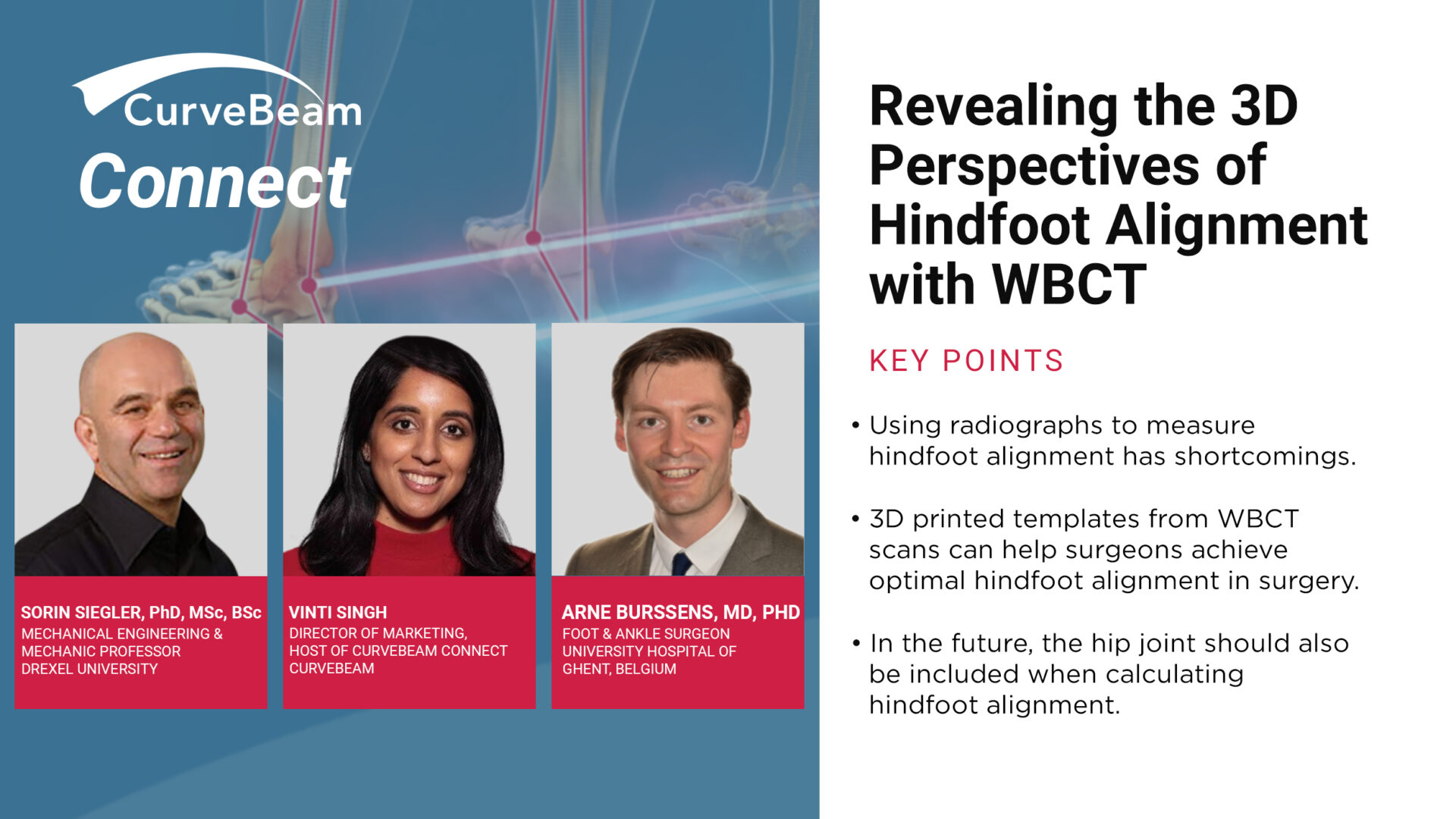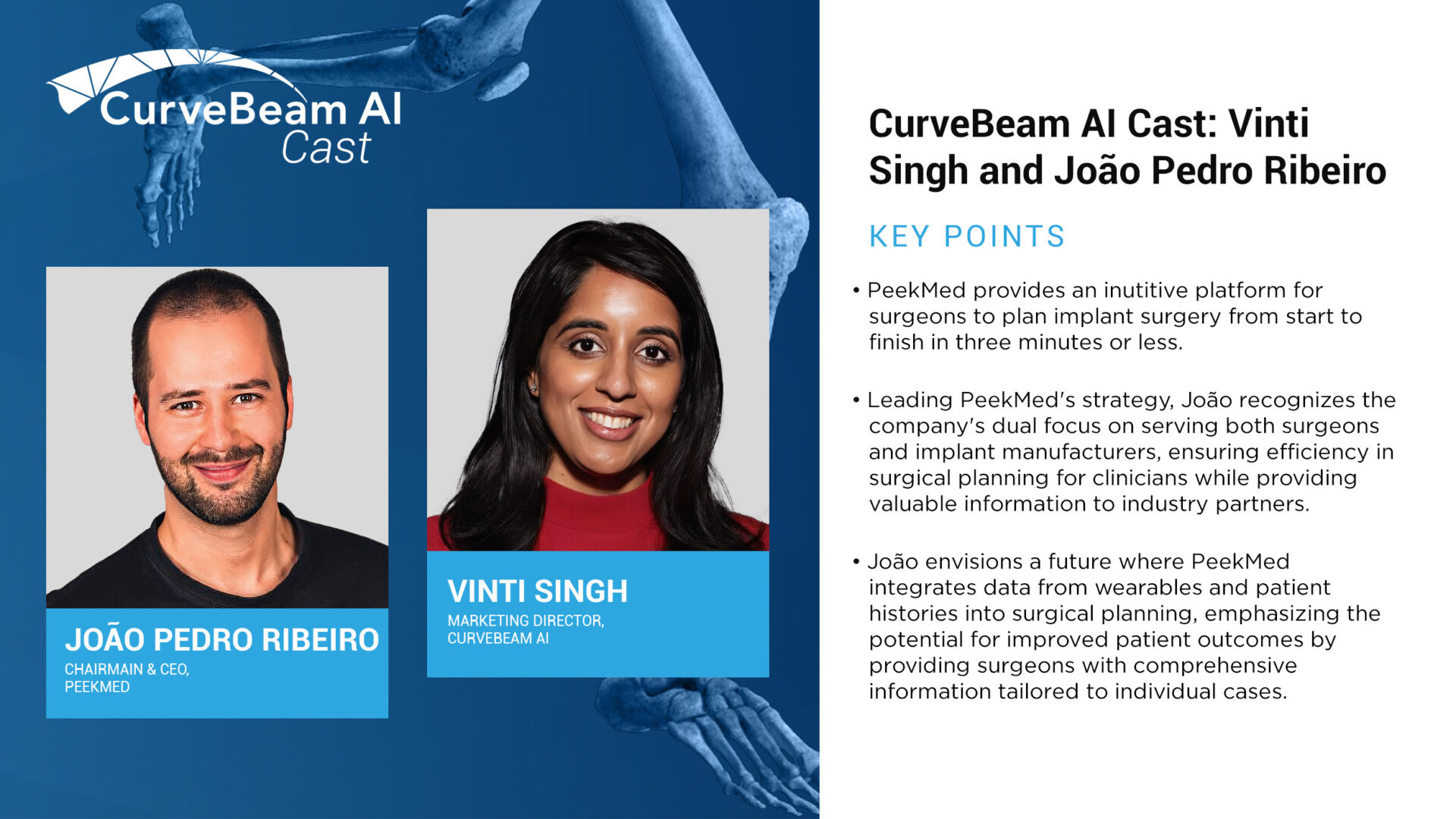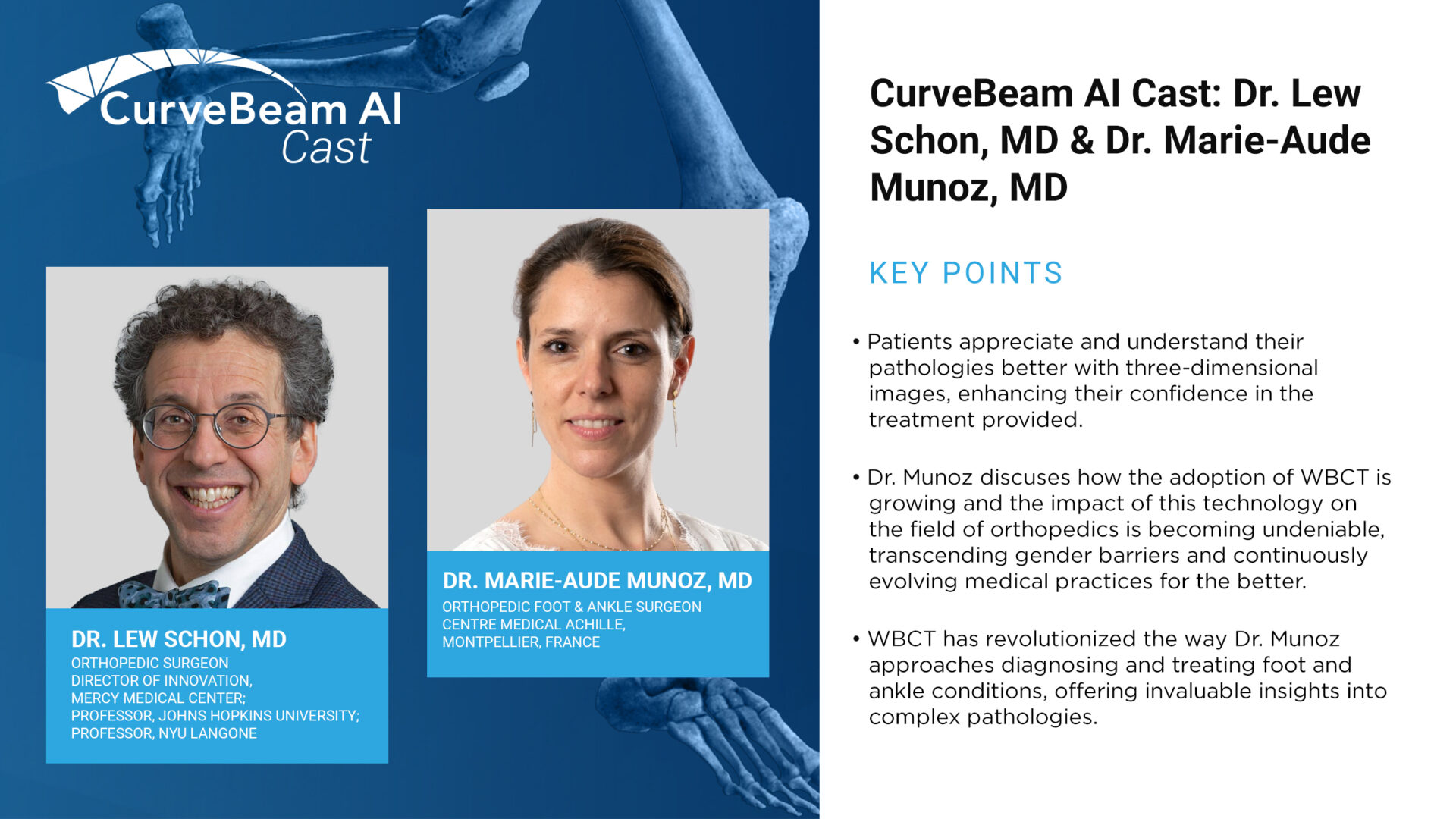The integration of cone beam CT imaging in research labs is revolutionizing orthopedic investigations. Dr…

Videocast: Revealing the 3D Perspectives of Hindfoot Alignment with WBCT
Weight bearing CT imaging could change how surgeons approach hindfoot alignment (HA) & deformity. Multiple scientific papers delve into the difficulties of measuring HA on traditional radiographs. Challenges posed by 2D imaging include superimposition by the midfoot and dependency on patient position. CurveBeam Connect host Vinti Singh spoke with Dr. Arne Burssens, Foot and Ankle Surgeon, and Sorin Siegler, Mechanical Engineering and Mechanic Professor, Drexel University about different methodologies to measure HA via WBCT.
Dr. Siegler noted that FAO (foot ankle offset) method does not take into consideration the entire foot. Dr. Siegler has devised a proposed method that takes the tibia, talus and calcaneus into account and is inspired by clinical measures that are done in a qualitative manner by surgeons in a surgical procedure. Siegler described his methodology in detail.
Dr. Burssens said Dr. Siegler’s method was well thought out, and went on to describe WB3D HA measurements devised by his own research team.
Dr. Burssens et al took the approach of utilizing methods previously described in scientific literature for radiographic evaluation of the hindfoot. However, these methods account for internal rotation, which radiographs do not. These differ from Dr. Siegler’s in that they use the anatomical structure of the tibia rather than a centroid calculated from anatomical landmarks.
Standards committees are being established to determine which measurements should be adapted as the standard. Burssens said. No matter which method is adapted as the standard, automated softwares will be required to bring it into the clinical practice, Dr. Burssens said.
Dr. Siegler proposed that 3D-printed templates designed from WBCT scans could guide surgeons to achieve alignment in total ankle replacements and other procedures.
“That template is really the communication between the engineer and the clinical application because without that the clinician will have a very tough time to implement that alignment following those initial definitions,” Dr. Siegler said.




